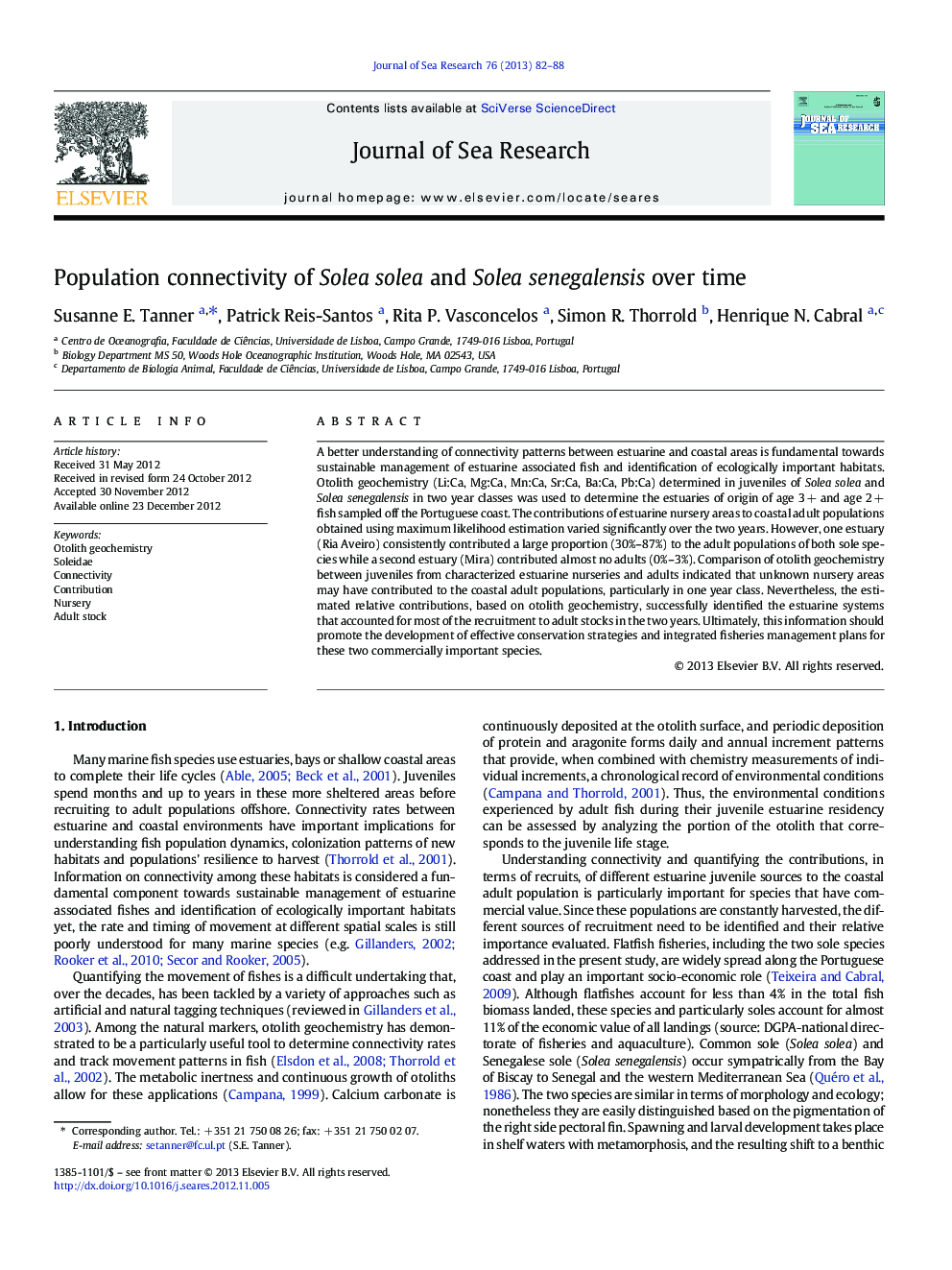| Article ID | Journal | Published Year | Pages | File Type |
|---|---|---|---|---|
| 4549886 | Journal of Sea Research | 2013 | 7 Pages |
A better understanding of connectivity patterns between estuarine and coastal areas is fundamental towards sustainable management of estuarine associated fish and identification of ecologically important habitats. Otolith geochemistry (Li:Ca, Mg:Ca, Mn:Ca, Sr:Ca, Ba:Ca, Pb:Ca) determined in juveniles of Solea solea and Solea senegalensis in two year classes was used to determine the estuaries of origin of age 3 + and age 2 + fish sampled off the Portuguese coast. The contributions of estuarine nursery areas to coastal adult populations obtained using maximum likelihood estimation varied significantly over the two years. However, one estuary (Ria Aveiro) consistently contributed a large proportion (30%–87%) to the adult populations of both sole species while a second estuary (Mira) contributed almost no adults (0%–3%). Comparison of otolith geochemistry between juveniles from characterized estuarine nurseries and adults indicated that unknown nursery areas may have contributed to the coastal adult populations, particularly in one year class. Nevertheless, the estimated relative contributions, based on otolith geochemistry, successfully identified the estuarine systems that accounted for most of the recruitment to adult stocks in the two years. Ultimately, this information should promote the development of effective conservation strategies and integrated fisheries management plans for these two commercially important species.
► Connectivity of juvenile and adult habitats was estimated using otolith geochemistry. ► Relative contributions varied between the two years. ► Portuguese estuaries important for adult replenishment were identified. ► Important information for conservation and fisheries management are highlighted.
